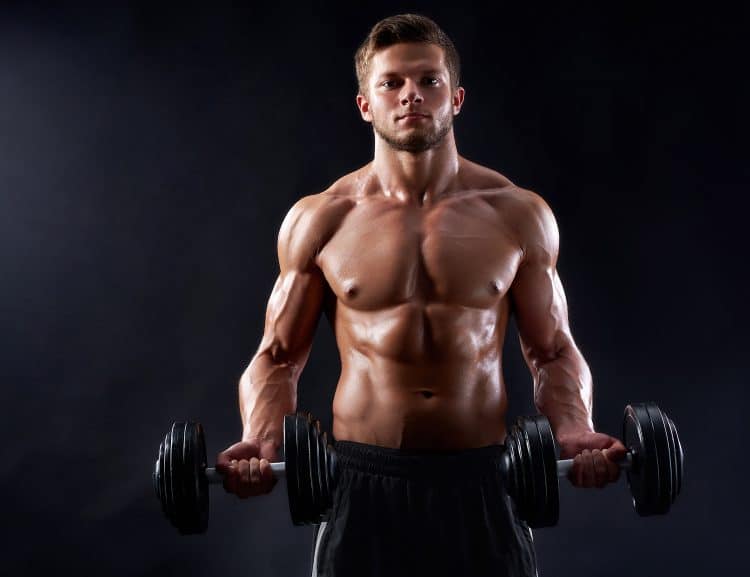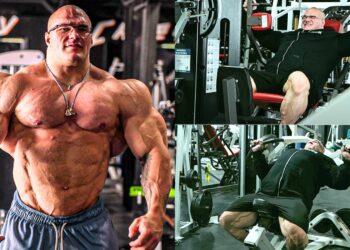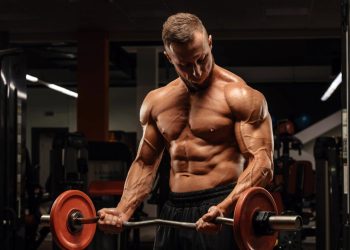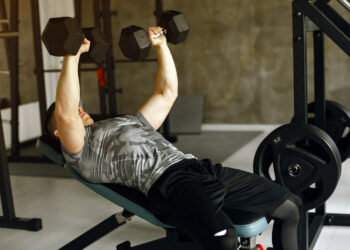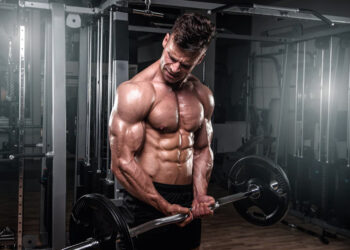Bodybuilding is a sport of aesthetic details. Even if two bodybuilders weigh the same and have the same physical measurements, one may look far better than the other.
Genetics, proportions, and symmetry all play a part, and things like water retention, glycogen loading, and skin tone also affect how a bodybuilder looks. Sometimes, the best physique is not even the biggest.
In some instances, the difference between two physiques is quite unquantifiable. There is just an unspecified something that makes some bodybuilders look even more impressive than their peers.
In a lot of instances, this something is muscle maturity.
In this article, we explain what muscle maturity is and how you can achieve it.
What is Muscle Maturity?
Firstly, it’s important to understand that there is no scientific definition for muscle maturity. In fact, outside of bodybuilding, it’s a term that is virtually unheard of. Nor is it something that’s been studied in humans.
Level Up Your Fitness: Join our 💪 strong community in Fitness Volt Newsletter. Get daily inspiration, expert-backed workouts, nutrition tips, the latest in strength sports, and the support you need to reach your goals. Subscribe for free!
As such, everything we know about muscle maturity is based on anecdotal evidence.
That doesn’t mean it isn’t real – muscle maturity definitely exists. It’s just that it’s not something that’s ever been measured or that can be easily quantified.
So, what is muscle maturity?
In simple terms, muscle maturity refers to muscles that look dense, striated, and capable. Mature muscles aren’t smooth or puffy. Instead, they look hard and solid. Muscle maturity doesn’t happen overnight or even after a couple of years of training.
Instead, muscle maturity can take decades of training to develop.
Here’s a great example of muscle maturity. On the left is a relatively young Lou Ferrigno. He’s clearly massive and muscular, but his muscles lack hardness. Several decades later, the Incredible Hulk star isn’t really any bigger. Still, his muscles look far better or, in bodybuilding parlance, much more mature.
Muscle maturity is one of the reasons that bodybuilders often don’t peak until their 30s and even their 40s. It takes years of hard training to build such high-quality muscle mass. In fact, the most common age of winners of the Mr. Olympia is 36, and the current oldest winners are Chris Dickerson and Shawn Rhoden – both aged 43.

Yes, there have been young, successful bodybuilders, but there are plenty of bodybuilders who have improved as they’ve gotten older. And while some of these improvements are undoubtedly due to increased muscle size or a lower body fat percentage, muscle maturity also plays a part.
How Muscles Change with Age
If you eat meat, you probably know that lamb is more tender than mutton and that veal is more tender than mature beef. This is because meat (muscle tissue) changes with age. So, if the properties of animal muscle change as it gets older, it’s a fair assumption that human muscles do too.
Reasons for these changes include a decrease in stores of intramuscular fat and a reduction in collagen, which is a protein responsible for tissue elasticity (1). More mature meat is invariably tougher, which is why it is usually cheaper and needs to be cooked longer to make it tender.
If your muscles contain less fat, their appearance is bound to be affected. And remember, this maturity happens independently of losing subcutaneous body fat, which is the fat between your skin and muscles.
Training and Muscle Maturity
Beginner bodybuilders often experience rapid muscle growth and increases in strength. This is because, as a newbie, all your workouts are new and stimulating, so your body adapts accordingly.
However, initial muscle size increases are partly due to sarcoplasmic hypertrophy, which is an increase in non-contractile proteins in the muscles. In short, it’s a sort of swelling.
This is why, as a newbie, missing a few workouts or quitting training altogether can result in rapid loss of muscle size. The sarcoplasmic fluids are quickly redistributed and reabsorbed.
But, as you progress from being a beginner to an intermediate lifter, changes in your muscles become more structural in nature. For example, muscle fibers begin to thicken, which is called myofibril hypertrophy, and may even increase in number, a process called hyperplasia.
In addition, your muscle fibers gradually change in response to your workouts. For example, intermediate type 2a fibers morph into type 2b fibers, which are the muscle fibers responsible for strength and size (2). It stands to reason that the longer and more consistently you train, the more type 2b fibers you will have, and the more mature your muscles will look.
Muscles also increase in firmness, which is called tonus or tone. Tone refers to the resting tension of a muscle and its readiness to contract. Muscle tone and muscle maturity are closely related.
These structural changes are far longer lasting and tend to endure even if you have a prolonged break from training. Also, once built, even if you do take time off from your workouts, your muscles will soon return when you start working out again. This is a phenomenon often referred to as muscle memory (3).
The longer you’ve been training, the longer your muscle memory is, and the faster you’ll bounce back after a break.
It’s clear, then, that consistent training over many years affects the structure of your muscles and contributes to muscle maturity. Your workouts even affect your DNA.
That’s why an experienced bodybuilder with years of workouts behind them looks different to a bodybuilding newcomer, even if they are the same size and have a similar body fat percentage.
How Long Does It Take to Develop Muscle Maturity?
Maturity happens over time. Wines and whiskey often have to sit untouched for many years to taste their best, and the same is even true for some aged cheeses. Your muscles are no different. In fact, it can take a decade of consistent training before your muscles start to take on that mature look.
Judging by how some bodybuilders’ physiques have changed over the years, it looks like muscle maturity can take anywhere from five to 15 years. It’s also important to understand that muscle maturity is not related to your age. Instead, it depends on the number of years you have been training.
For example, if you start lifting weights in your late teens, you could have a mature-looking physique by age 25. In contrast, if you didn’t start lifting seriously until your late 30s, you might be 45-50 before your muscles take on a look of maturity.
The fact is you can’t rush muscle maturity, and it’ll only happen after many years of consistent workouts.
How to Develop Muscle Maturity
Muscle maturity is the result of many years of consistent bodybuilding. Every workout you perform will contribute to how good your muscles will look five, ten, or even 20 years from now.
That said, there are a couple of things you can do that could help you achieve muscle maturity a little sooner.
Don’t skip workouts
Muscle maturity is the result of loads of consistent training. Not a week, or a month, or even several months, but YEARS! As such, you must start and maintain a workout routine and avoid skipping workouts.
One of the best ways to do this is to choose programs you know you can stick to. Sure, a six-day per week push-pull-legs program may be great for muscle growth, but if you can only hit the gym three times per week, starting such a plan is pretty pointless.
So, when choosing your next workout, don’t take on something too ambitious. Instead, choose a program you know you can stick to. It’s always better to under-commit and overdeliver than over-commit and fail to deliver.
Read more about how to develop a lifelong exercise habit here.
Train for strength and size
Many bodybuilders do a lot of their training in the so-called hypertrophy rep range of 6-12 reps per set. While this can be effective, sarcomere hypertrophy is partly triggered by muscle tension, and the best way to put a lot of tension through your muscles is with heavy weights.
So, don’t just do 6-12 reps per set. Instead, ensure you include some heavy strength training in your workouts.
For example:
- Bench press – 5 sets of 3-5
- Incline bench press – 3 sets of 6-8
- Dumbbell bench press – 3 sets of 9-12
- Dumbbell flys – 3 sets of 9-12
Such a varied workout will maximize type 2b muscle fiber engagement while encouraging those transitory type 2a fibers to become strong and powerful type 2bs, too.
Get lean
Don’t hide your muscle maturity under a layer of fat. If your body fat percentage is too high, you won’t be able to see the hardness and details of your hard-won mature muscles. There is a time for bulking and gaining mass, but once you are happy with your muscle size, bodybuilding becomes a game of details and conditioning.
So, forget the perma-bulk and focus on getting and staying lean to reveal your muscle definition and hardness.
Train smart and not just hard
You can’t work out if you are injured, so you can’t just train hard; you’ve got to train smart, too. Use good form, respect your body’s need for sleep and recovery, warm up properly, don’t rush your weight and volume increases, and avoid exercises that bother your joints.
One workout won’t give you muscle maturity. Instead, you need to complete thousands of workouts to achieve this look. Train smart and look after yourself – injuries and anything else that keeps you out of the gym will make it much harder to develop a mature physique.
Be patient
Even if you put these strategies into practice, muscle maturity will still take many years to develop. As such, it may be a long time before you start to see your more mature muscles emerge. Trying to rush the process won’t help; it’ll happen when it happens.
So, you’re going to have to exercise your patience along with your muscles. If you’ve only just started training, you may even need to forget all about muscle maturity for a while.
Think of muscle maturity as a reward for many years of consistent workouts; you’ve got to earn it!
Muscle Maturity – Closing Thoughts
I used to train with a guy in his 70s. He’d been lifting weights for nearly 50 years and hardly ever missed a workout.
He wasn’t the biggest man in the gym, and nor was he the strongest. However, his muscles looked like they’d been carved from an ancient oak and every fiber and striation was clearly visible. He was the epitome of a mature physique.
Watching this guy train was a live-action anatomy lesson; he looked like a moving muscle chart!
Younger guys used to ask him what his secret was, and his answer was invariably the same – just keep turning up.
By this, he meant the secret to building an awe-inspiring physique was years of consistent training and not a particular exercise, exotic supplement, or convoluted training split. There are no shortcuts.
So, to achieve muscle maturity, make bodybuilding a lifelong habit. That’s the key to building a rock-hard physique.
References:
1– Journal of Food Science: Effect of Animal Age on the Tenderness of Selected Beef Muscles https://ift.onlinelibrary.wiley.com/doi/abs/10.1111/j.1365-2621.1990.tb06004.x
2– PubMed: Muscle Fiber Type Transitions with Exercise Training: Shifting Perspectives https://www.ncbi.nlm.nih.gov/pmc/articles/PMC8473039/
3– Science Daily: Study Proves ‘Muscle Memory’ Exists at A DNA Level https://www.sciencedaily.com/releases/2018/01/180130091144.htm

